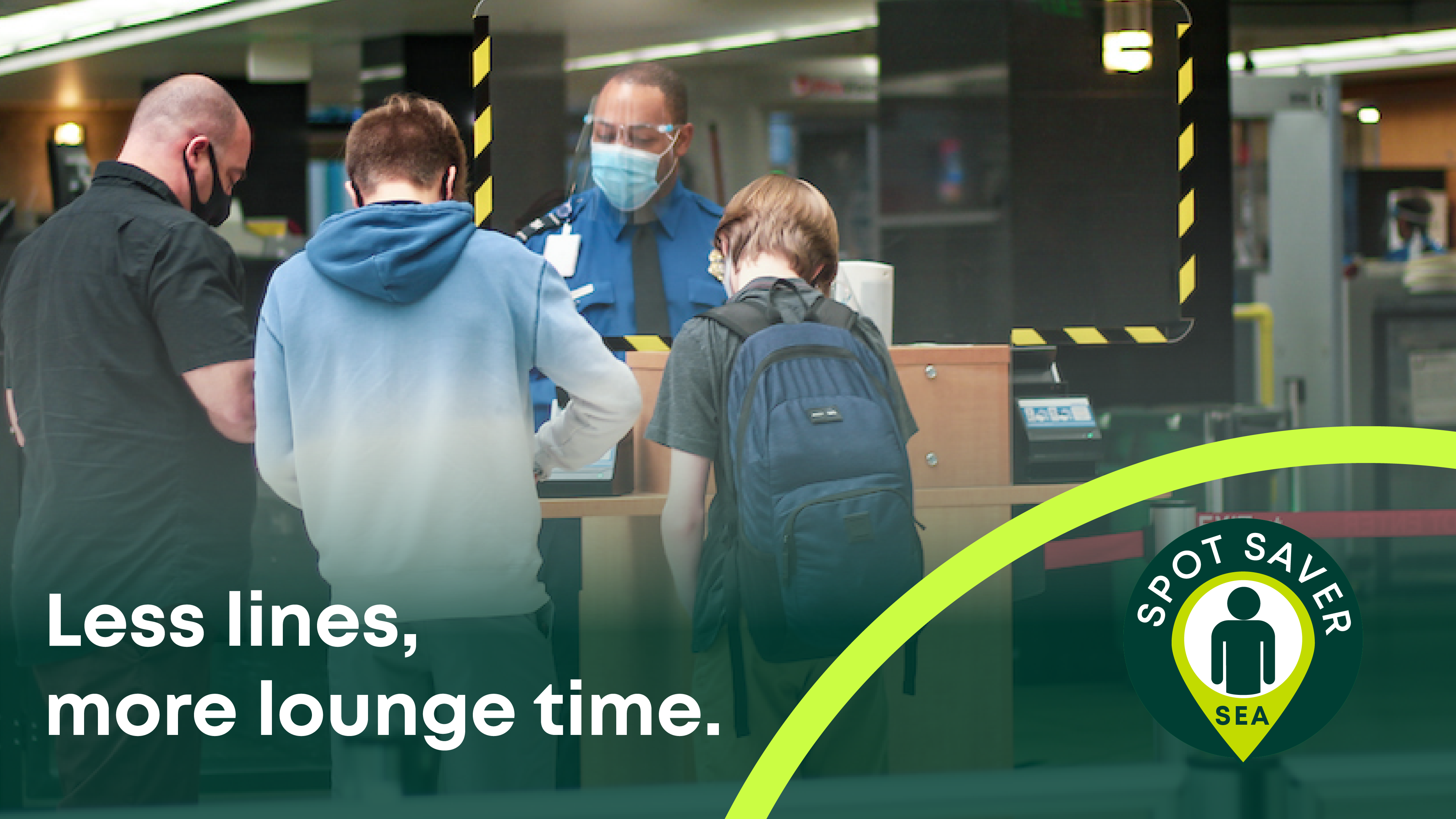The good news: air travel is picking up. On Sunday, the Transportation Security Administration screened more than 1.6 million passengers, the most since March 12, 2020.
The bad news: long wait times at security checkpoints may be back coming back, too.
At times during spring break, the lines to go through the security checkpoint stretched into the food court at Orlando International Airport and across the skybridge and into the parking garage at Seattle-Tacoma International Airport (SEA).
TSA is in the process of hiring 6,000 new screening officers ahead of the predicted summer travel surge. And that should help move things along.
So, too, could a new pilot program that debuts Tuesday at the Seattle airport.
JUST IN: @TSA officers screened 1,626,962 people at airport checkpoints yesterday, Sunday, May 2. It is the first time since the pandemic hit that passenger volume has topped 1.6 million in a single day and the highest checkpoint throughput since March 12, 2020. Mask-up!
The program, called SEA Spot Saver, seeks to streamline wait times by offering digital reservations, or “virtual queuing” for passengers to go through the TSA screening process.
The program will operate daily through Aug. 31 from 4 a.m. to noon (the airport’s peak travel period) at two checkpoints (2 and 5) and offer expedited screening to general screening passengers for free. No membership or account sign-up is required. (Expedited, non-reserved screening remains available to passengers enrolled in Trusted Traveler programs such as TSA PreCheck and CLEAR).
SEA Spot Saver will be testing two options.
The SEA Spot Saver program aims to save travelers wait time in the TSA line. (Photo: Port of Seattle)
Alaska Airlines passengers can sign up for a security checkpoint appointment online up to 24 hours before their scheduled departure time or once they are in the terminal.
Passengers will receive a QR code to use at the checkpoint at their reservation time. That option is offered by Pangiam and powered by WhyLine and Copenhagen Optimization.
There is a separate line at Checkpoint 5 for Alaska passengers. Groups traveling together can enter “party size” on the reservation form, which can save a spot for a group of up to 12 people.
“We are confident this pilot program will help reduce queue crowding, enable social distancing and provide a smoother and safer experience for travelers at Seattle-Tacoma International Airport,” said Dan Tanciar, Chief Innovation Officer at Pangiam.
The second option, operated by VHT, is for passengers flying on Delta Air Lines and all other carriers. This option allows passengers to begin booking a checkpoint appointment time by scanning a QR code once they are in the terminal.
At Checkpoint 2, Delta and other passengers will find signage with staff checking appointment times. Up to 10 people are allowed per reservation.
Both options give passengers a 15-minute window for their appointment times.
When it is your time for an appointment: The app notifies you when to go to your assigned checkpoint to “just look for the SEA Spot Saver logo. “
“Virtual queueing showcases our belief in putting customers in control of their experiences,” says Matt DiMaria CEO of VHT. “While it offers passengers a sense of comfort and stability, it also grants airports the power of predictability and efficiency. It’s truly a win-win for everyone.”
Seattle will be the only airport in the United States currently testing a “virtual queuing” system as a solution for crowded general screening lines.
Travelers faced long lines at Seattle-Tacoma International Airport TSA checkpoints as travel ticked up around spring break. (Photo: Port of Seattle)
Montreal-Trudeau International Airport’s (YUL) has offered screening reservations since 2014 through SecureXpress, but that program is currently on hold due the pandemic.
“The pandemic has left very few passengers coming and going through YUL,” said spokeswoman Anne-Sophie Hamel. “As such, there is no line-up to get through security, and the service is simply not useful right now.”
From October 2020 through April 30 Denver International Airport piloted the VeriFLY program, which offered timed checkpoint appointments but required passengers to file health data information before arrival and get temperature checks on site.
Port of Seattle officials say that after the pilot program is completed at late this summer, they will evaluate usage, customer feedback and line efficiency; and, if successful, launch a broader program.
“These are the innovations and ideas that we love to make our guest experiences more convenient and stress-free, especially as more people get back flying again,” said Charu Jain, Alaska’s senior vice president of merchandising and innovation. “With very little effort, guests can lean on technology to get them through the security process quicker.”
Source: Read Full Article


